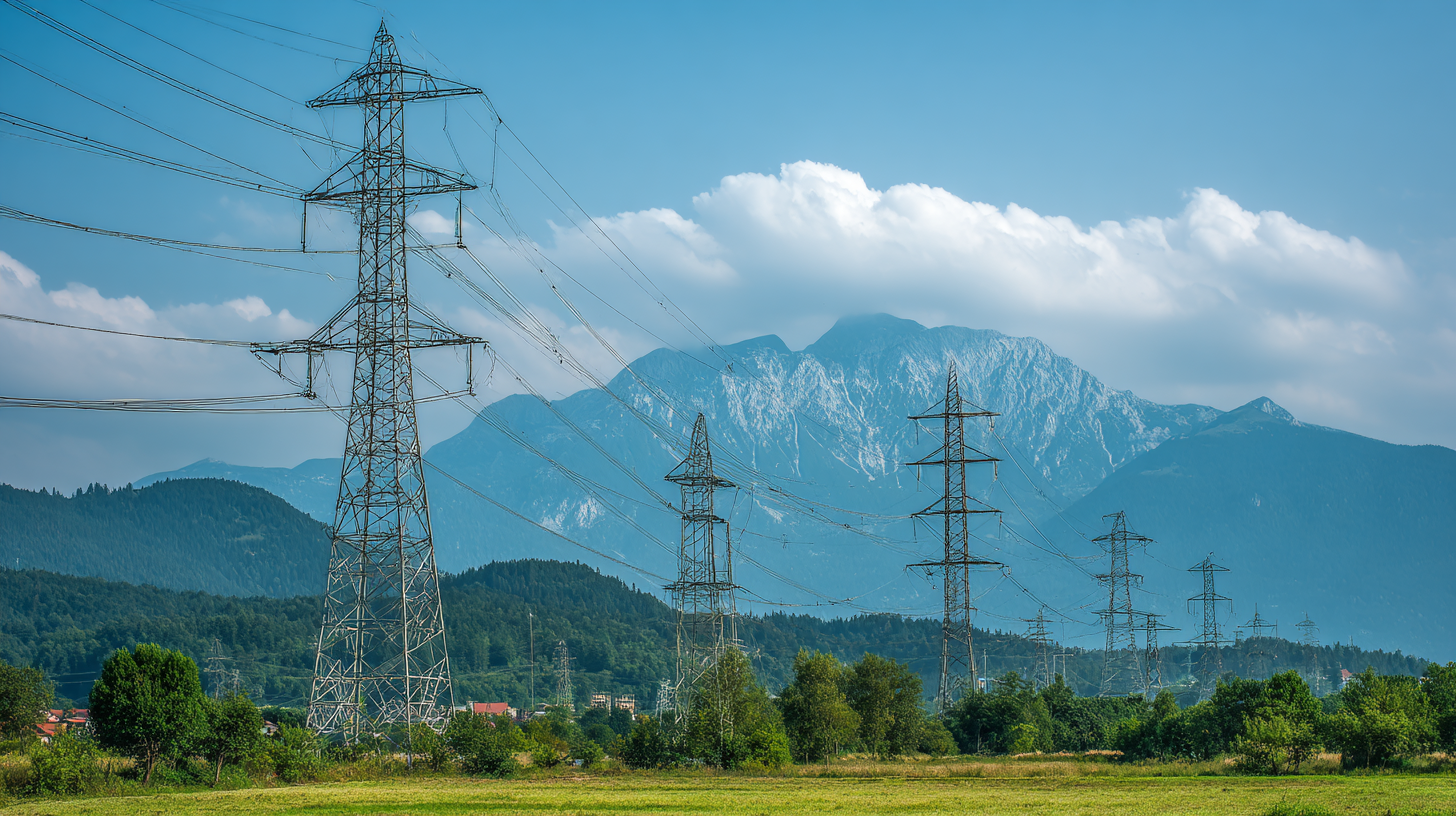
Blog
Evaluating the Ecological Benefits of Green Power vs Traditional Energy Sources: A Comprehensive Comparison
In recent years, the debate surrounding energy sources has gained significant momentum, particularly the comparison between green power and traditional energy sources. As society grapples with the challenges of climate change and environmental degradation, understanding the ecological benefits of these energy types is more crucial than ever. This comprehensive comparison will delve into how green power—derived from renewable resources such as solar, wind, and hydro—can offer sustainable solutions that not only reduce greenhouse gas emissions but also foster biodiversity and protect natural habitats. Conversely, traditional energy sources, while often cheaper and more accessible, pose significant threats to ecosystems and long-term environmental health. Through a detailed evaluation of their impacts, we aim to illuminate the vital role green power can play in building a sustainable future, ultimately guiding stakeholders in making more informed energy choices.

Understanding Green Power: Definition and Types
Green power refers to energy generated from renewable sources that have minimal environmental impact. These sources can be categorized into several types, including solar, wind, hydroelectric, geothermal, and biomass. According to the U.S. Energy Information Administration (EIA), renewable energy sources accounted for about 20% of electricity generation in the United States as of 2021, with solar and wind energy witnessing significant growth due to technological advancements and decreasing costs.
In contrast to traditional energy sources, such as coal and natural gas, which contribute heavily to greenhouse gas emissions, green power plays a crucial role in combating climate change. For instance, a report by the International Renewable Energy Agency (IRENA) states that transitioning to renewable sources could reduce global carbon dioxide emissions by up to 70% by 2050. Moreover, utilizing green power not only benefits the environment but also enhances energy security and stimulates economic growth. As industries increasingly adopt sustainable practices, the demand for green energy continues to rise, driving advancements in renewable technologies and infrastructure.
Environmental Impact of Traditional Energy Sources
Traditional energy sources, such as coal, oil, and natural gas, have long been the backbone of modern civilization’s energy demands. However, the environmental consequences of their extraction and usage are profound. These fossil fuels not only emit substantial amounts of greenhouse gases, which contribute to global warming, but also result in significant air and water pollution that can devastate local ecosystems. The mining processes involved, particularly in coal extraction, can lead to habitat destruction, soil erosion, and waterway contamination, posing substantial risks to wildlife and human populations alike.

Moreover, the combustion of fossil fuels releases harmful pollutants, including sulfur dioxide and nitrogen oxides, which can lead to acid rain and respiratory problems in humans. The variability in oil and gas drilling practices further complicates the ecological impact, often leading to oil spills that wreak havoc on marine and coastal ecosystems. As society increasingly recognizes these detrimental effects, the urgency to transition towards more sustainable energy solutions grows clearer. This shift not only seeks to mitigate the environmental damage caused by traditional energy sources but also aims to create a cleaner, healthier planet for future generations.
Comparing Carbon Footprint: Green Power vs Fossil Fuels
The shift towards green power is arguably one of the most significant developments in our quest to mitigate climate change and reduce our carbon footprint. When comparing the carbon emissions associated with green power sources like wind and solar to traditional fossil fuels, the stark difference is evident. Green power technologies produce little to no greenhouse gases during operation, whereas fossil fuels consistently release high levels of carbon dioxide and other pollutants. This discrepancy highlights the urgency for nations and businesses to transition towards sustainable energy solutions.
In light of recent developments, such as the launch of the world's largest green hydrogen and ammonia production facility in Inner Mongolia, the conversation surrounding the benefits of green energy solutions intensifies. The establishment of such facilities demonstrates the potential for renewable sources to significantly decrease overall carbon emissions while also providing a cleaner alternative as we increasingly rely on energy for industrial activities. As the green power sector continues to evolve, it presents a dual opportunity: reducing the carbon footprint of energy generation and fostering innovation in emerging technologies, such as carbon nanotubes, which are expected to see substantial growth in the coming years.
Evaluating the Ecological Benefits of Green Power vs Traditional Energy Sources
This chart compares the carbon footprint (measured in grams of CO2 emitted per kWh of energy produced) of green power sources with that of traditional fossil fuels.
Renewable Resources and Their Ecological Contributions
The ecological contributions of renewable resources are increasingly recognized as essential in mitigating environmental challenges posed by traditional energy sources. Renewable energy, such as solar, wind, and bioenergy, offers significant benefits by reducing greenhouse gas emissions and enhancing air quality. For instance, studies illustrate how biofuels and biomass technologies, spanning from first- to fourth-generation, can contribute to sustainable development goals while promoting energy independence. This transition towards greener alternatives underscores the vital role that innovative energy solutions play in fostering a healthier ecosystem.
Moreover, the intersection of environmental taxation and globalization further amplifies the ecological benefits of renewable resources. Environmental taxation strategies incentivize cleaner production methods and energy consumption, thus supporting the transition to a green economy. As globalization progresses, it introduces challenges and opportunities for sustainability, driving countries to adopt green practices that prioritize ecological welfare. This cooperative effort among nations not only focuses on economic growth but also strengthens collective resilience against climate change, reinforcing the necessity of renewable resources in achieving long-term ecological balance.
Evaluating the Ecological Benefits of Green Power vs Traditional Energy Sources: A Comprehensive Comparison
| Energy Source | CO2 Emissions (g/kWh) | Water Usage (Liters/kWh) | Land Use (m²/kWh) | Biodiversity Impact |
|---|---|---|---|---|
| Solar Power | 0 | 2 | 1.6 | Positive |
| Wind Power | 0 | 1.5 | 0.4 | Moderate Positive |
| Natural Gas | 450 | 3 | 0.5 | Negative |
| Coal | 950 | 6 | 1.2 | Severe Negative |
| Hydropower | 30 | 0.5 | 0.8 | Moderate Negative |
Long-term Sustainability: Green Power's Role in Energy Future
As we venture into the future, the importance of long-term sustainability can no longer be ignored. Green power, which includes renewable sources such as wind, solar, and hydroelectric energy, plays a crucial role in shaping an energy landscape that prioritizes environmental health and resilience. Unlike traditional fossil fuels, green power generates energy with minimal harm to ecosystems, significantly reducing carbon emissions and mitigating climate change. This shift not only preserves natural habitats but also helps maintain biodiversity, making it essential for a sustainable energy future.

Moreover, the integration of green power fosters innovative technologies and practices that enhance energy efficiency. As societies increasingly prioritize sustainability, green energy initiatives spur economic growth while creating jobs in burgeoning sectors like solar panel manufacturing and wind turbine installation. This transition to renewable energy sources also promotes energy independence, reducing reliance on imports and contributing to national security. Ultimately, green power is more than an alternative; it represents a foundational shift in how we approach energy production and consumption, ensuring a healthier planet for generations to come.